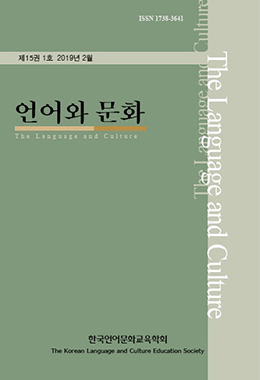This study aimed to prepare basic educational data so that learners can fully understand the usage of sentences embedded with noun clauses “-(으)ㅁ” and “-기,” and to actively utilize them in academic texts. Accordingly, this study attempted to gain a comprehensive understanding of usage aspects and awareness levels by analyzing academic texts written by those whose mother tongue is Korean as well as academic learners, and by conducting a grammaticality judgement test among the learners. Based on the research on usage aspects and awareness levels of sentences embedded with noun clauses “-(으)ㅁ” and “-기,” this work suggests categorization of the combined predicates shown in native Korean speakers’ academic texts into types in the education on sentences embedded with noun clauses “-(으)ㅁ” and “-기.” In addition, it highlights the need to explain not only the syntactic restriction but also its function within academic texts in detail. Lastly, it posits that the learners would be better able to grasp the difference if the two nominalizer endings are presented in a comparative manner. This study clarified the usage patterns of native Korean speakers and academic learners by limiting the scope of the text corpora, which have been utilized previously to analyze sentences embedded with noun clauses, to academic texts written by people whose mother tongue is Korean. Furthermore, this study is meaningful as it suggests effective contents and methods for the education for academic learners by looking at the difficulties learners have faced in utilizing sentences embedded with noun clauses “-(으)ㅁ” and “-기,” based on their grammaticality judgement test results. (Chung-Ang University)


